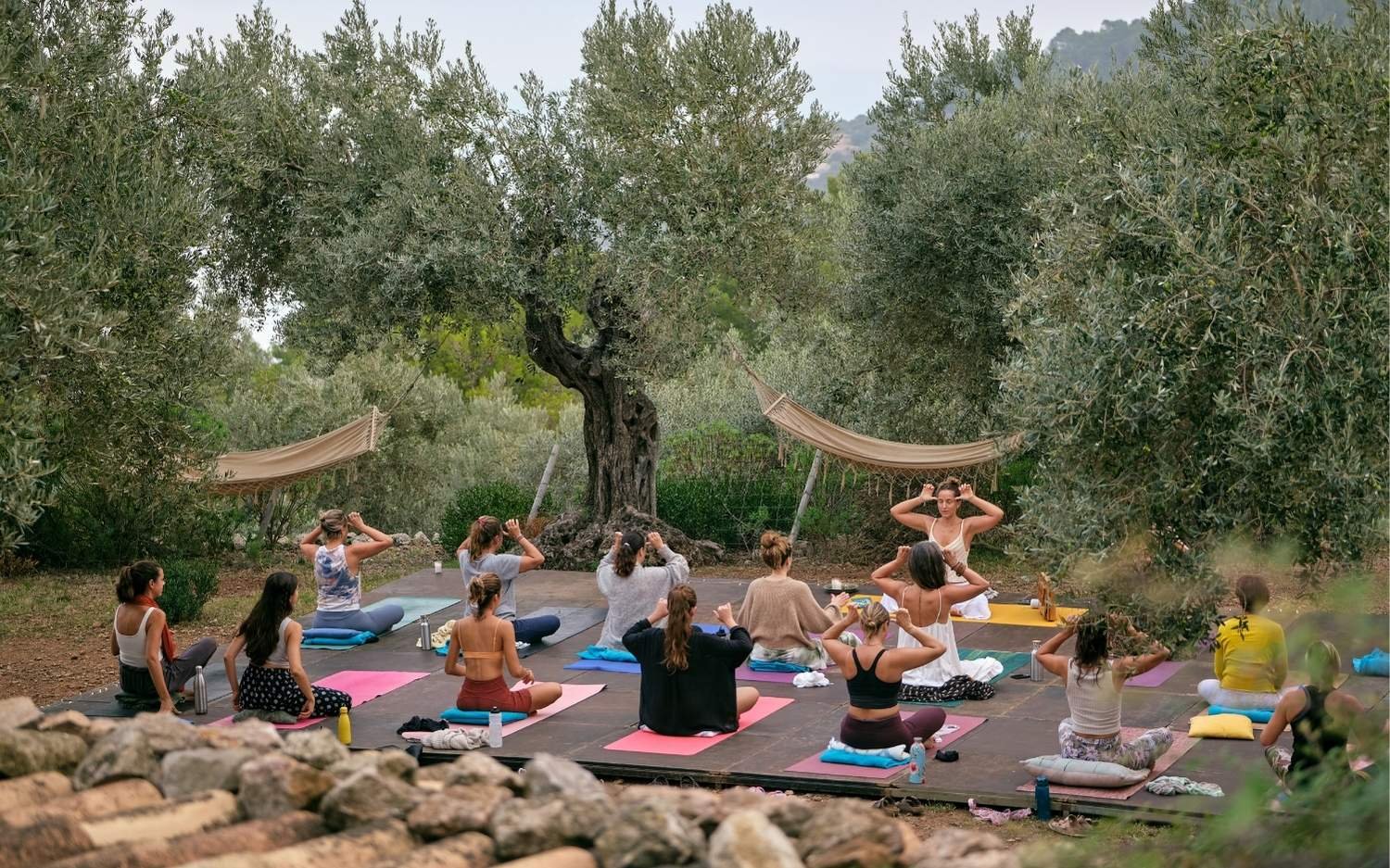Why YTT Can Feel Overwhelming and
How to Stay Grounded

Yoga teacher training (YTT) can be one of the most rewarding experiences of your life but it can also feel overwhelming for many trainees. The pace is fast, the content is dense, and the changes to your daily life are instant. Whether you’re learning anatomy one hour and cueing Warrior II the next, or trying to absorb centuries of yoga philosophy while remembering how to teach a Sun Salutation, it’s easy to feel overwhelmed.
In this guide we’ll unpack why YTT can feel so intense and, more importantly, how to stay grounded through it all. From information overload to the emotional rollercoaster of self-doubt, you’ll learn strategies that help you move from “I can’t keep up” to “I’ve got this.”
This article is part of The Ultimate Guide to Yoga Teacher Training: Challenges and How to Overcome Them. If you haven’t read the main guide yet, start there to explore all 15 topics and get the complete picture for your YTT journey.
Why YTT Feels Overwhelming for Many Trainees

The structure of most yoga teacher trainings is designed to immerse you completely, which is part of the magic and part of the challenge. Common reasons trainees feel swamped include:
- Information Overload – You’re absorbing yoga philosophy, anatomy, sequencing, cueing, and ethics all at once. The content comes in concentrated bursts, which makes it hard to process before the next lesson arrives.
- Time Commitment – Training often means giving up evenings, weekends, or vacation days. Those with jobs, families, or other responsibilities can struggle to keep all the plates spinning.
- Physical Demands – Multiple asana classes per day, plus long hours sitting on the floor, can leave even seasoned practitioners feeling fatigued.
This mix of intellectual, emotional, and physical strain is what makes YTT unique and why it’s so important to have grounding strategies in place.
The Hidden Pressures Trainees Face
Beyond the visible workload, there’s an undercurrent of emotional and mental challenges that can make training feel heavier:
- Imposter Syndrome – Worries about being “good enough” to teach can creep in.
- Peer Comparison – Watching others progress faster in teaching skills or physical practice can trigger self-doubt.
- Shifting Personal Practice – Your yoga may suddenly feel more like “work” than personal nourishment.
- High Expectations – The desire to excel, either from internal pressure or external validation, can lead to burnout.
Recognizing these pressures early is the first step to defusing them. You’re not failing if you feel challenged, you’re simply moving through a rite of passage.
Staying Grounded During YTT

Practical ways to stay centered include:
- Create a Home Base Practice – Keep a short daily ritual (like five minutes of breathing or gentle stretches) that’s just for you, not for teaching.
- Use Bite-Sized Learning – Break big concepts into smaller chunks you can review in the evenings. This is key!
- Journal Every Day – Writing down what you learned and how you felt helps cement knowledge and release emotional tension.
- Set Boundaries – Protect rest time by saying no to unnecessary commitments during training.
- Lean on Support – Talk openly with fellow trainees, mentors, or friends about challenges you face. More than likely, they are experiencing similar challenges.
Even small grounding habits compound into greater resilience over the length of your training.
Practical Tips for Managing the Work Load
If you’re in the thick of YTT right now, here are quick wins you can implement immediately:
- Bring a cushion or bolster to protect your hips and lower back during lectures. These Meditation Chairs are great.
- Record lectures or discussions (with permission) to revisit later at your own pace.
- Rotate your study focus so you’re not always tackling the hardest material when you’re most tired.
- Keep snacks and water nearby, stable energy means better focus.
These low-effort adjustments can have a big impact on how manageable the training feels day to day.
Final Thoughts
YTT’s intensity is part of what makes it life-changing but you don’t have to be swept away by the current. By recognizing the sources of overwhelm and building grounding practices into your routine, you can navigate training with more clarity, confidence, and joy.
If you found this useful, be sure to read the main guide and check out related pages like The Mental Checklist for Starting Yoga Teacher Training.
